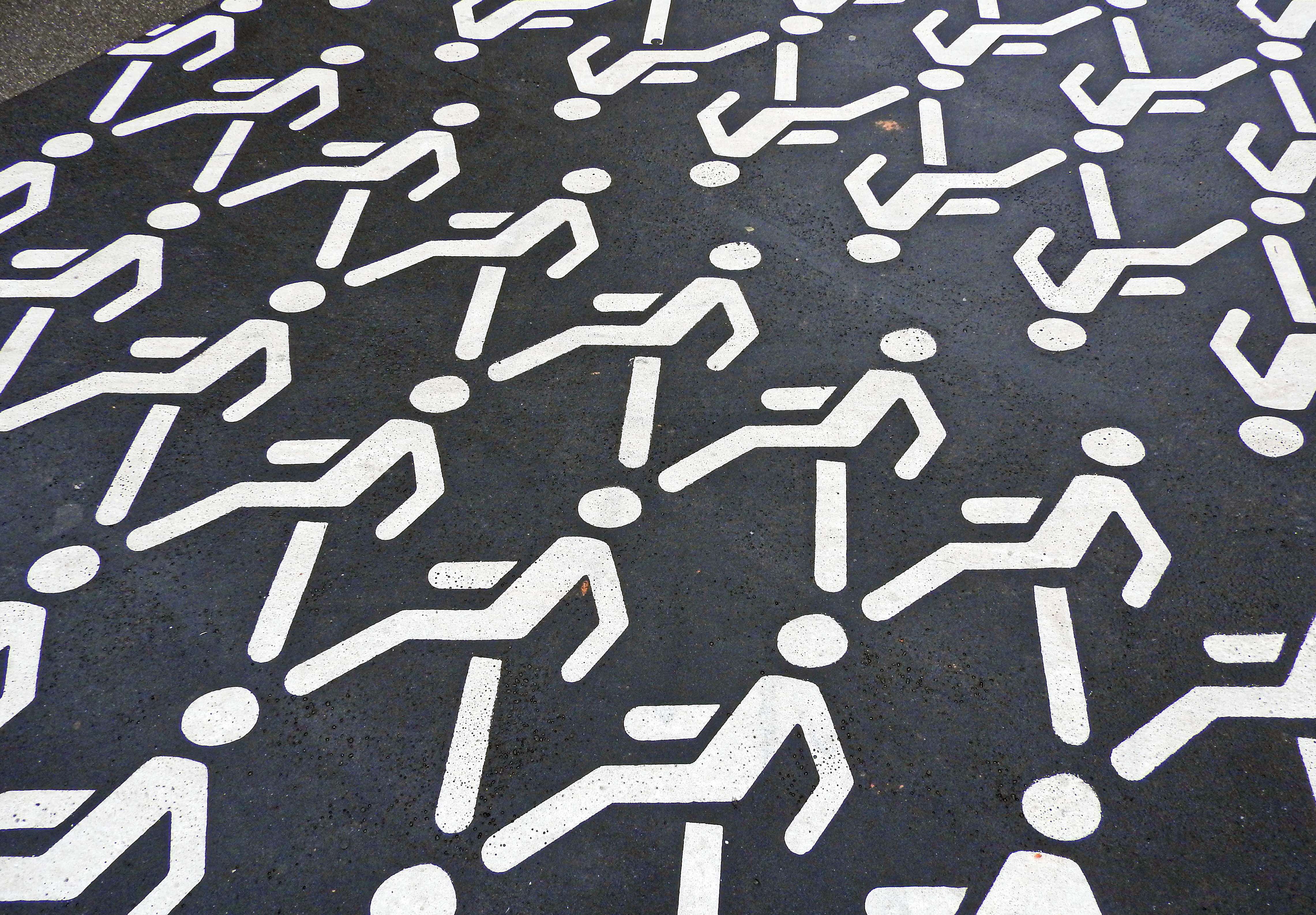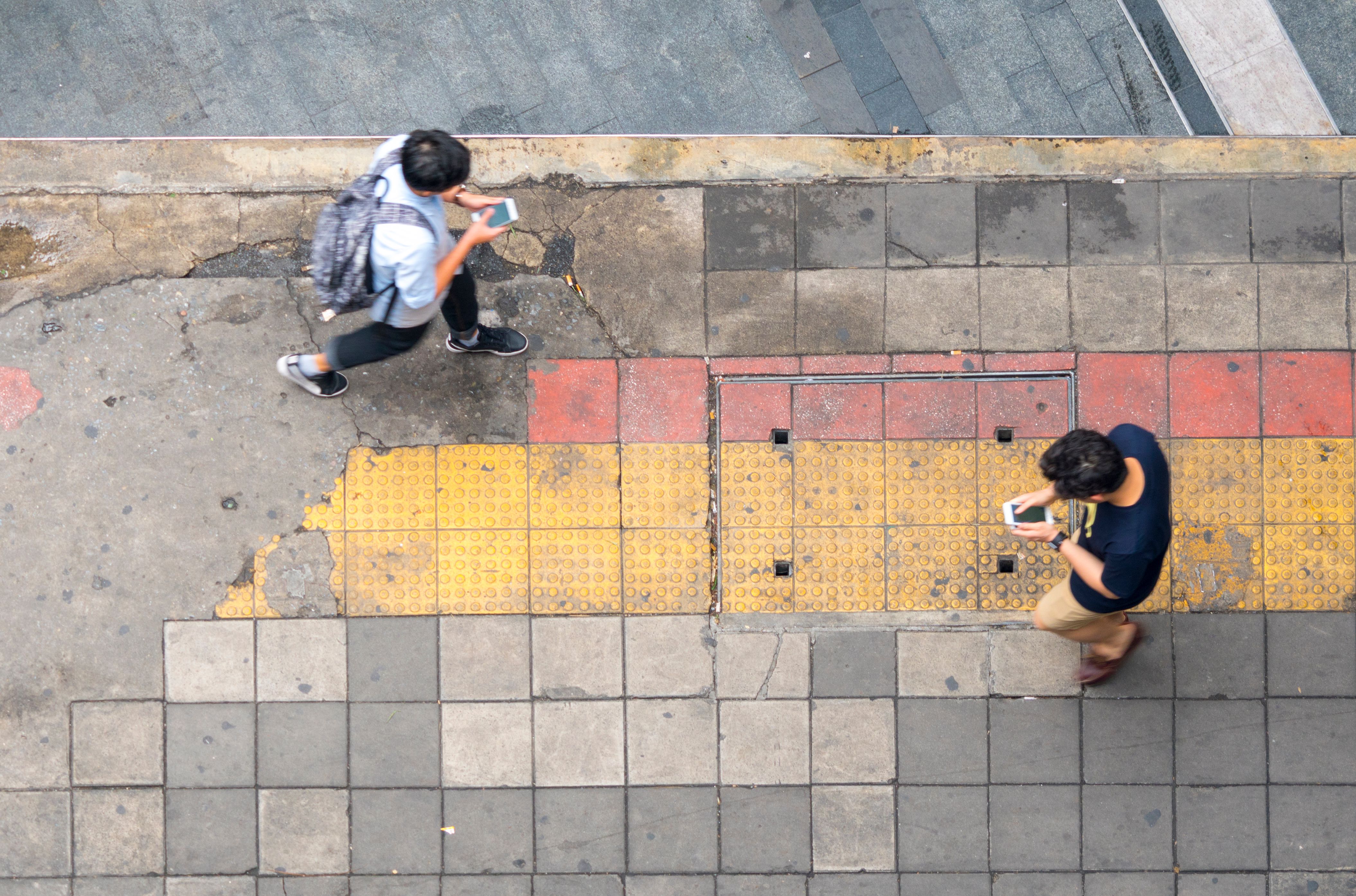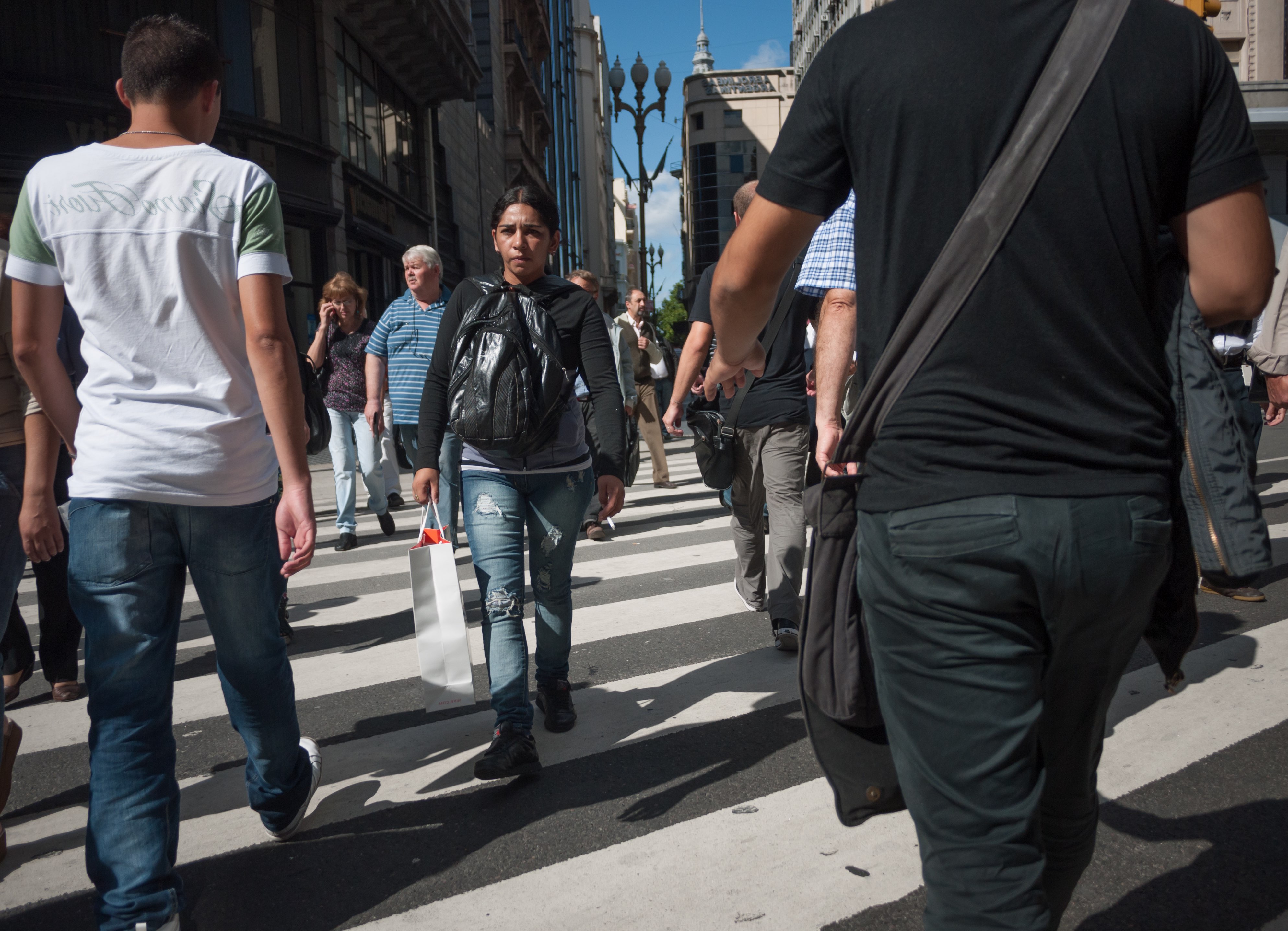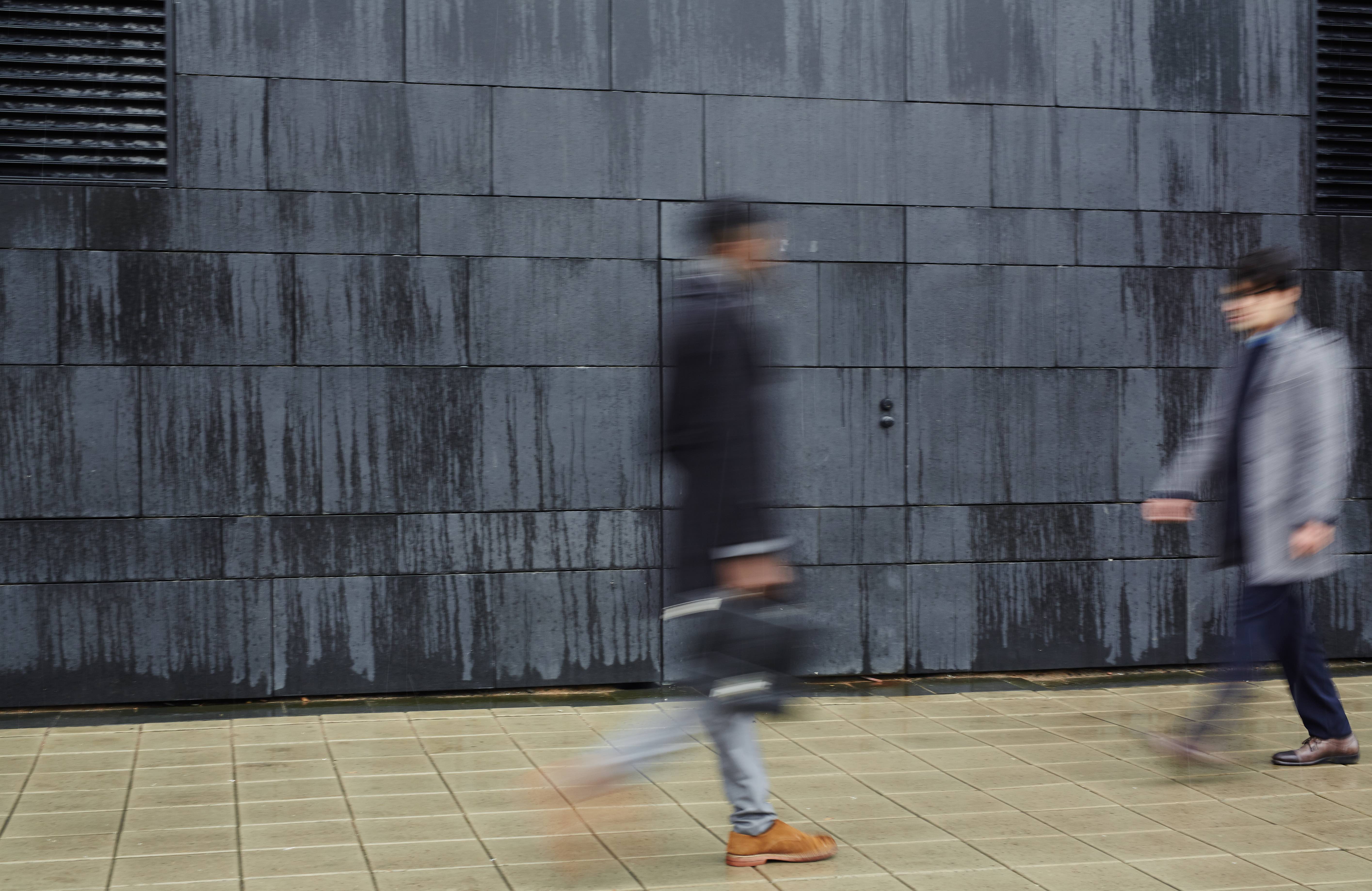
Health & Medicine
Every day, we’re actually seeing into the future

Two people walk towards each other, both try and get out of the way - before you know it, they’re doing the ‘sidewalk salsa’
Published 7 January 2019
Here’s a familiar scenario: you’re walking down the street, and you see someone heading straight toward you. You step to the left to get out of their way – but they step to their right to do the same, you both step the same way again, laughing awkwardly. Before you know it, you’re both hopping from foot-to-foot in an odd dance attempting to dodge the other person, almost butting heads every time.

Let’s call this the I’m-trying-to-get-around-you dance or, as one researcher noted with a laugh, the “sidewalk salsa”. It might not be a daily phenomenon, but it’s common enough that most of us have experienced it.
But why does it happen? And are some of us more susceptible taking part in this ‘dance’ than others?
According to some University of Melbourne experts, it all comes down to the complex ways the human brain makes sense of the world around it. For a start, most of what we experience in the ‘now’ is actually what our brains are predicting will happen.

Health & Medicine
Every day, we’re actually seeing into the future
Dr Hinze Hogendoorn, a senior research fellow at the Melbourne School of Psychological Science, studies visual time perception - namely, how the brain interprets visual stimuli, how long it takes to interpret what we’re seeing and what happens over time as it works to make those interpretations.
“By the time we become aware of things that are happening in the world, that information is old,” Dr Hogendoorn explains.
“For example, when you’re playing tennis and you’re receiving the ball, if the brain weren’t pulling some fancy tricks then the place where you’d see the tennis ball is actually behind where it is in the world.”
The fact that we’re able to accurately judge where a moving object is – like a ball – suggests the brain has some tricks up its sleeve to compensate for this lag, Dr Hogendoorn says.
“I think, implicitly, you’re forming a prediction of not just the delay that your own brain will have but the time that it takes to move your entire body to reach that object.”

Where this can get tricky is when you’re moving towards a moving object that has its own mind, like another person. In this situation, we can be tripped up – sometimes literally – by the other individual’s anticipation of, and their response to, our movement.
“Because it takes time to detect what the other person is doing, and the other person needs time to detect what you’re doing, then you can end up sort of zig-zagging towards each other because you’re both making the same correction at the same time; repeatedly,” Dr Hogendoorn says.
That these run-ins often occur in busy environments adds another layer of complexity.

“Those situations can become incredibly dense,” says Dr Jared Cooney Horvath, an educational neuroscientist who specialises in human learning, memory and brain stimulation.
“When we’re walking down a busy sidewalk, that is a ton of information to process – but most of us have been there enough times in the past to navigate it.
“Kids bump into people all the time because they haven’t had the prediction of how sidewalks are supposed to work. But once they get older and they get enough experience, they start to go, ‘Okay, cool, when there’s a lot of people you slide to the left, the other person slides to the left, you pass each other’.”
In order for our brain to make a prediction about what the person coming towards us will do, and then act accordingly, we need to know that the other person has come to the same conclusion. This is where something interesting comes into play – empathy.
If you can’t read people or imagine someone else’s perspective, then you won’t pick up on the cues that indicate what they’re going to do next. These cues range from eye contact, to the sort of steps someone is taking and the direction their shoulders are angled.

Ordinarily, a split-second glance is all it takes for a person to read another’s signals and to make an assessment instantly and subconsciously.
And when two people do this together, it’s called “neural synchrony”; what Dr Horvath describes as an “empathetic and resonant moment”.
“We can actually see what people are thinking in the split second when they look up; we glance at each other and see what each of us is doing,” he says.

Sciences & Technology
Why smells trigger your memories
“Both brains will fire off almost exactly the same, which is a sure sign we just read each other and we’re going to play the same game. Versus people who don’t look at each other or haven’t made that connection – their brains don’t synch up and that’s usually when you get people dancing in the same way or bumping into each other.”
Though factors such as cultural background also play a role in these situations – for instance, someone from the US is more likely to go right to avoid another person, while Australians will opt for the left – empathy can help people avoid each other.
“In this case, what empathy kind of means is the ability to resonate with another person really quickly and easily,” Dr Horvath explains.
“Even with all the practice in the world, some people will still struggle with it because they can never quite tie themselves to the person they’re walking towards.”
For example, some forms of autism make it difficult for an individual to imagine themselves in someone else’s shoes, “so they just kind of walk and assume the world is going to walk with them”, says Dr Horvath.

As to why two people can end up locked in a back-and-forth dance, that’s due to both individuals running the same sequence simultaneously in their minds in an attempt to fix the situation.
“Because we’ve learned prediction, and it’s worked enough in the past, then if I almost bump into somebody, I’ll step one way, they’ll go the other,” Dr Horvath says. “But if you just accidentally run the same program in your minds, you can run it all day until somebody breaks the program and just says, ‘Stop’.”
Further, the time it takes to correct our direction can exacerbate “the dance”, adds Dr Hogendoorn.

Sciences & Technology
Are redheads with blue eyes really going extinct?
“One thing that plays an important role is simply the time it takes: once you’ve detected that someone’s going a certain direction, you have to plan how you’re going to go, and then you have to make your muscles change. And more time passes in doing that than we think.”
Given the constant assessing and snap decision-making going on behind the scenes of something seemingly as simple as a walk down the street, perhaps the real mystery of these awkward, inadvertent encounters is why they don’t happen more often.
The way Dr Horvath sees it, the I’m-trying-to-get-around-you dance – or the “sidewalk salsa”, as his brother so aptly coined it one day – is something of a microcosm; a quirky phenomenon that illustrates just how deep the human brain goes.
“If you think about it, the ability to walk safely down a street with thousands of other people – you can tell where everyone’s going, what they’re doing, what they’re thinking – that is an incredibly difficult thing,” he points out.
“And that’s how powerful our ability to think is.”
Banner image: Shutterstock